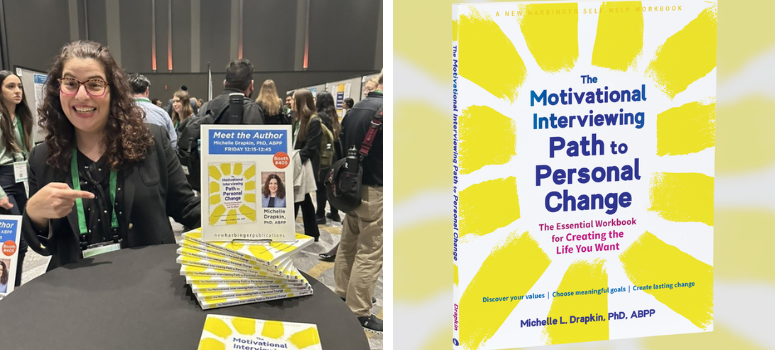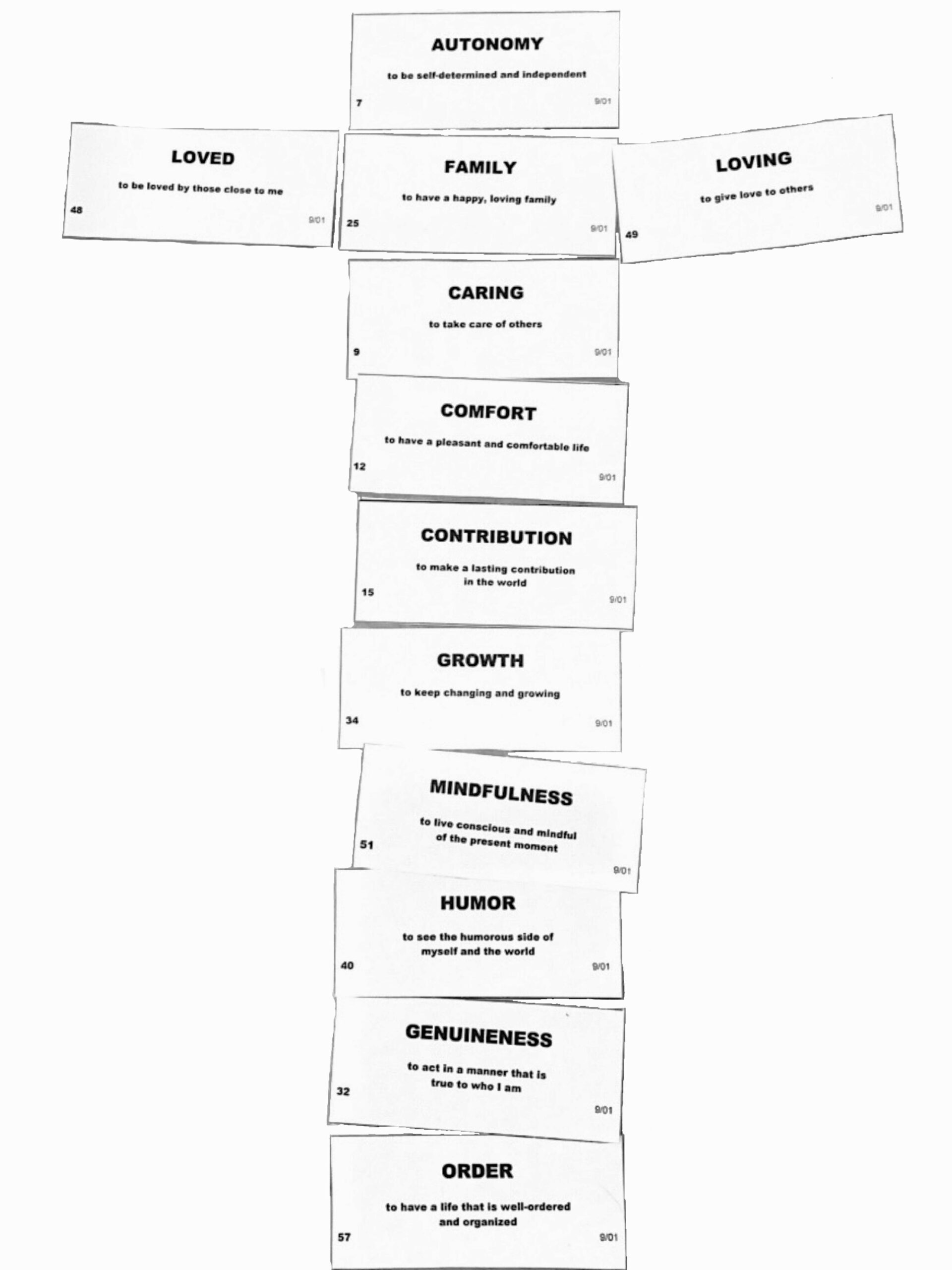Find a CBT Therapist
Search through our directory of local clinicians.
Michelle Drapkin

Michelle Drapkin, PhD, ABPP
Author, The Motivational Interviewing Path to Personal Change: The Essential Workbook for Creating the Life You Want
What was your motivation behind writing this book?
My personal mission is “Better Access to Better Care.” I care deeply about increasing access to good, evidence-based care to help more people reduce their suffering. I never thought I’d write a book – that’s a lot of writing! – and putting together something like “The Motivational Interviewing Path to Personal Change” brings together my 20+ year background in motivational interviewing (MI) with sprinkles of other solid approaches, like dialectical behavior therapy (DBT), acceptance and commitment therapy (ACT), mindfulness, and classic cognitive behavior therapy (CBT). It’s in a lot of ways my personal “best of.” This is an affordable, accessible way to disseminate some solid evidence-based tools. I truly hope it helps!
How has your clinical experience informed this book?
Tons! I let my patients teach me every day. MI is a client-centered, flexible approach; and I’ve learned over the years that there is no “one size fits all,” so the book has lots of options very intentionally. That is consistent with MI – respecting someone’s autonomy and empowering them to choose – and I really wanted to keep a reader engaged. I have thought through many of the patients I have worked with over the years and what they might need in any part of the change journey.
Can you summarize the premise of your book?
I really wanted to call the book something cheekier, like “Choose Your Own Change Adventure,” because the premise of the book is really about the reader owning their own change journey. The book is even designed to be read in a way that makes sense to the reader – you can flip around or go cover-to-cover. In general, it starts with you figuring out your values and meaning so you can set goals that have a solid foundation and there’s a lot of flexibility in the process because, well, change is hard and we learn a lot about ourselves and what is important to us as we go through that process. The book is written in my voice and is written intentionally in thoughtful, accessible language.
Who is your book’s audience? Why would ABCT members find this book helpful and impactful?
There are a few main audiences – anyone who wants to make a change in their life, who is feeling stuck, and who wants to move in the direction of their values (and find out what they are!). Anyone means all of us! The other main audience is any of us clinicians who want to help patients more effectively discover their values, set meaningful goals, and stay engaged in a behavior-change journey. Finally, I hope that this is a tool for anyone who practices MI. MI is “simple but not easy” and I hope that writing a self-help version of MI makes it more accessible to helpers of all kinds who want to learn MI.
ABCT members might appreciate having these MI tools to enhance their other interventions. MI works super well both as a prelude to and integrated into evidence-based interventions. Having something like this at your fingertips to help engage a patient in treatment and sustain their motivation can be super helpful. We know motivation waxes and wanes. I hope this book helps all of us help others ride that wave!
Highlight one or more of the skills or tools that you share in the book.
 In the book I included a few different ways to access values (what is important to someone and drives them). Readers can do all of the exercises or pick ones that fit. There is a values identification and prioritization exercise using a checklist or a card sort exercise. I personally love the card sort; and readers have access to a PDF where they can cut out values and literally sort them into piles of what is super important, just ok important, and not important at all. We then have them narrow down to their top 10 values and rank order them. Another option is using your awareness muscle to connect with your Best Self – when are you at your best, most energized, most engaged in life – and describing what that is, how it looks. And, we even encourage readers to draw their best selves. I include my own Best Self drawing because it’s terrible and poignant at the same time. There are even a couple other ways to access values in the book!
In the book I included a few different ways to access values (what is important to someone and drives them). Readers can do all of the exercises or pick ones that fit. There is a values identification and prioritization exercise using a checklist or a card sort exercise. I personally love the card sort; and readers have access to a PDF where they can cut out values and literally sort them into piles of what is super important, just ok important, and not important at all. We then have them narrow down to their top 10 values and rank order them. Another option is using your awareness muscle to connect with your Best Self – when are you at your best, most energized, most engaged in life – and describing what that is, how it looks. And, we even encourage readers to draw their best selves. I include my own Best Self drawing because it’s terrible and poignant at the same time. There are even a couple other ways to access values in the book!
Check out these links for more from the CBT Center & The Motivational Interviewing Path to Personal Change
My Account Info
Manage your Membership information, email preferences, and more.
Journals
Membership in ABCT grants you access to three journals.
Convention
We are now accepting Abstract submissions for Continuing Education Ticketed Sessions at the 2024 ABCT Convention in Philadelphia, PA.
My Account Info
Manage your Membership information, email preferences, and more.
Journals
Membership in ABCT grants you access to three journals.
Convention
We are now accepting Abstract submissions for Continuing Education Ticketed Sessions at the 2024 ABCT Convention in Philadelphia, PA.
